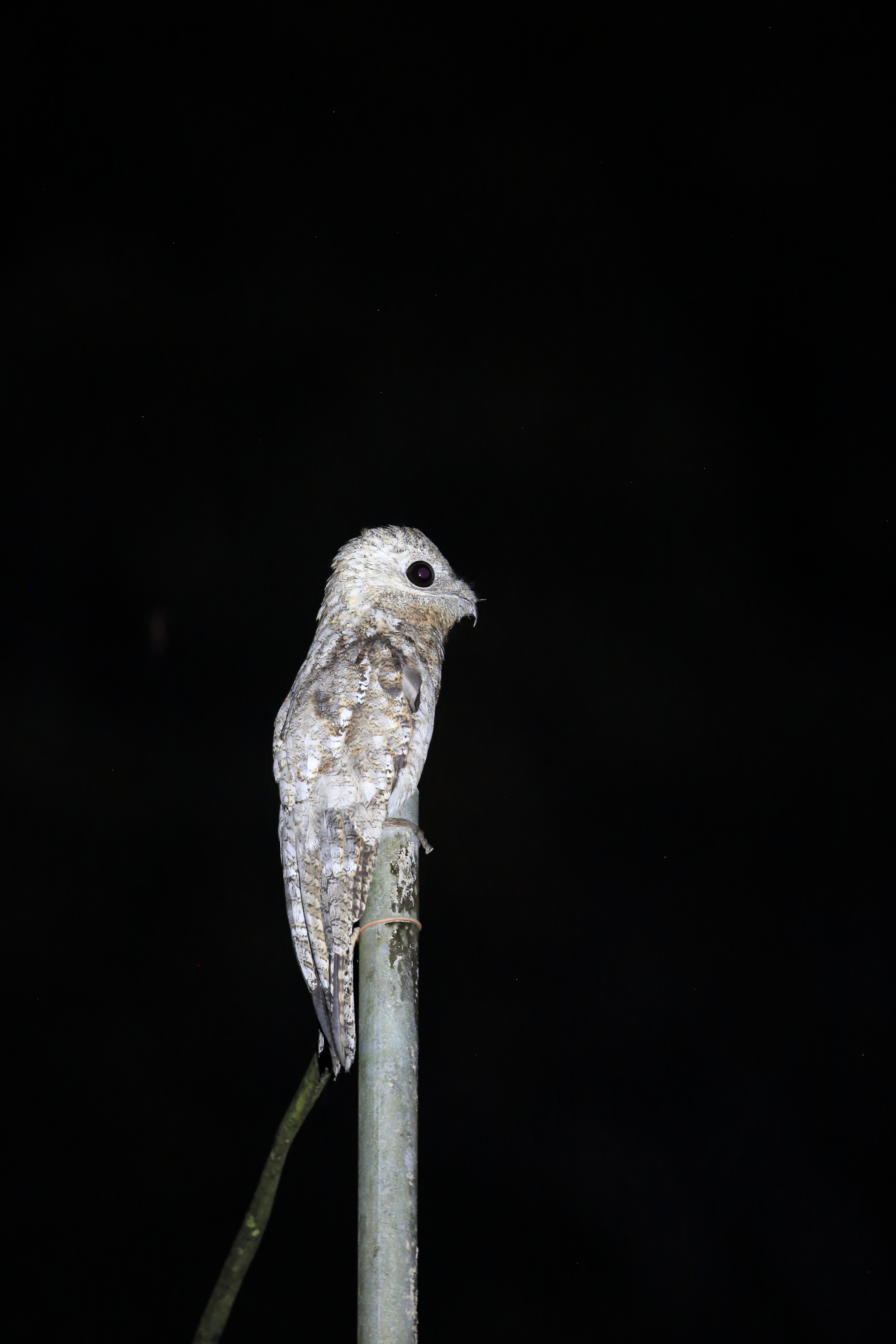Combine big dark eyes, a tall body, beautiful feathers that perfectly mirror a tree branch, an enormous mouth, and a loud, terrifying call – what do you get? It’s time to meet the biggest ghost bird in South America.
What is a ghost bird?
The ghost bird in question is actually a species known as the great potoo (Nyctibius grandis).
These birds look pretty funky. They stand between 48 to 60 centimeters tall (18.9 to 23.6 inches) with a 70 to 80 centimeter wingspan (27.6 to 31.4 inches) and have an enormous mouth and large black eyes. They also exhibit no sexual dimorphism, meaning the males and females look very similar.
They are often mistaken for owls, but though they are nocturnal and have excellent night vision thanks to those large eyes, they belong to a different group.
Instead, potoos belong to the taxonomic order Nyctibiiformes, though until 2021, they belonged to Caprimulgiformes, an order that now just includes the nightjars. Within this order is the family Nyctibiidae, which has seven species in two genera; the great potoo belongs to Nyctibius.

Expert insect catchers, the potoos have slits in their eyelids that allow them to sense movement even when asleep.
Image credit: feathercollector/Shutterstock.com
Where do the ghost birds live?
Great potoos have a very large range and are found across South America including in Brazil, Columbia, Venezuela, and even further north into Costa Rica, Nicaragua, Honduras, and Mexico. They are currently listed as Least Concern by the IUCN Red List, showing only a very small decline in population.
While these birds hunt at dawn, dusk, and through the night in these regions, in the day, they are capable of sitting still for long periods of time. The potoos often do this on tall tree stumps, which they blend into with their camouflaged feathers. They even have a “freeze” pose with their necks outstretched, helping them blend in even more with the trees.
Breeding and nests
Great potoos do not build nests but instead lay a single egg in a deeper gap or depression within a roosting branch. The chicks spend around a month and a half being looked after by their parents – who are monogamous breeders – but are usually fully independent by two months old.
What do great potoos sound like?
Great potoos are known for their vocalizations. BBC Science Focus describes their noises as “moaning growl sounds like an angry fox gargling a Jägerbomb”, while Britannica suggests that the great potoo “belts out a distinct bawl that can disturb people unaccustomed to the nocturnal life of the tropical forest.”
The related common potoo (Nyctibius griseus) is also found across much of Central and South America, and in Peruvian folklore, has a song that is said to tell the story of a lost child calling for its mother.
The pootoos are also related to a bird from North America called the whippoorwill, (Caprimulgus vociferus), named as such because it can repeat its name 400 times without stopping.
Source Link: Meet The Great Potoo: South America’s Loud But Elusive Ghost Bird